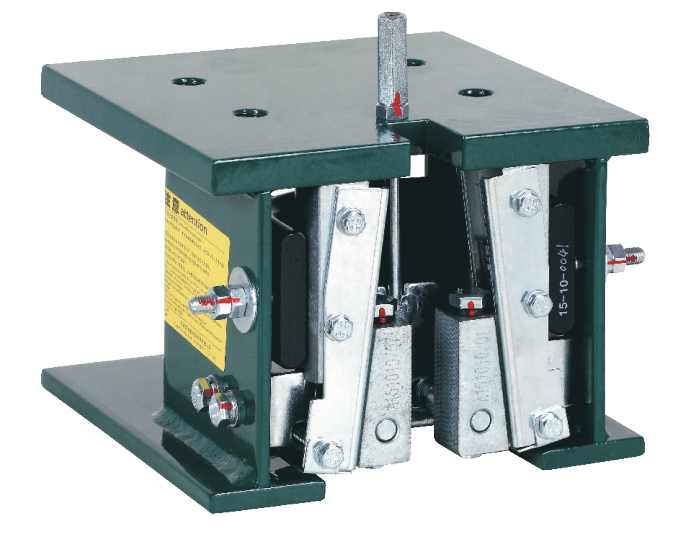Introduction to progressive safety pliers:
The transmission mechanism and pull rod parts of the progressive safety clamp and the instantaneous safety clamp are the same, the biggest difference is that the action element of the progressive safety clamp is elastic clamping, and the stopping distance is longer. When the safety clamp moves, the elastic clamping force tights the wedge to slide on the guide rail, and most of the kinetic energy and potential energy generated by car sliding are absorbed by the friction consumption between the wedge and the guide rail. The national standard stipulates that the average stop speed of car sliding should be between 0.2-1.0g, so when the safety clamp moves, the car sliding distance will be much longer than the instantaneous safety clamp. Therefore, for elevators with rated speeds greater than 0.63m/s, progressive safety pliers should be used. If the rated speed of the weight safety pliers is greater than 1.0m/s, progressive safety pliers should also be used.

The elastic clamping force acting on the guide rail is limited when the progressive safety clamp stops the car. The distance and time of stopping are related to the load of the car and the speed of the safety clamp at the beginning. After the safety clamp is completely moved, the elastic holding force basically remains unchanged. The progressive safety clamp mainly restricts and maintains the braking force by limiting the deformation of the applied elastic element, and braking through the limited braking force. Therefore, the sliding distance of the car when it stops is much longer than that of the instantaneous safety clamp, so it can also be called the sliding action safety clamp.
Post time: Feb-15-2023
![富吉-[LOGO]-105](https://www.fujisj.com/uploads/a78ec670.png)


